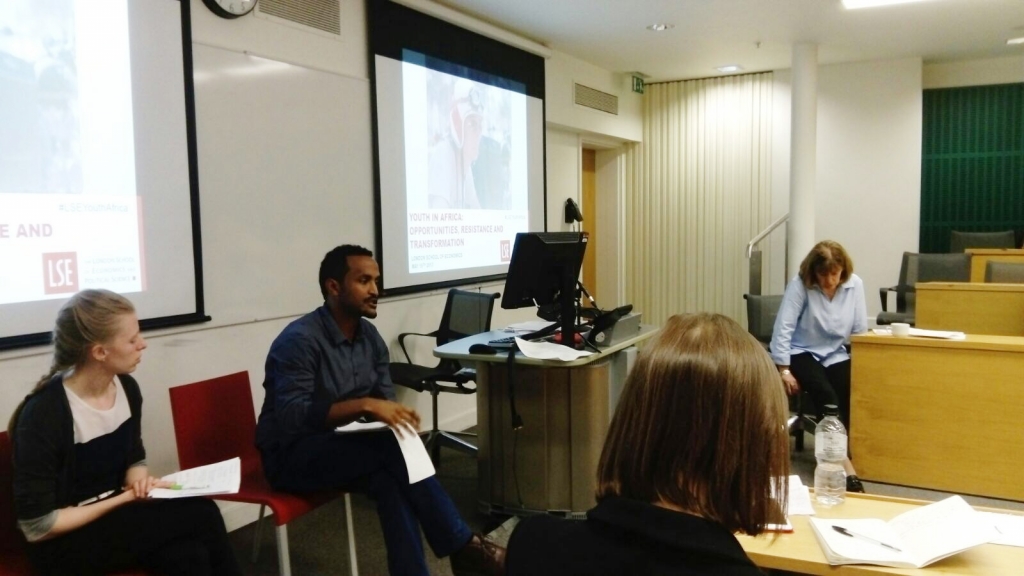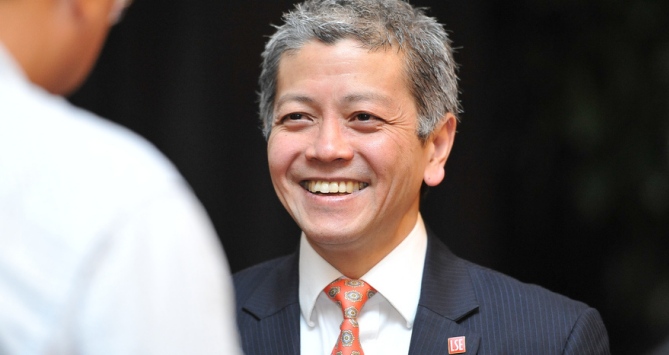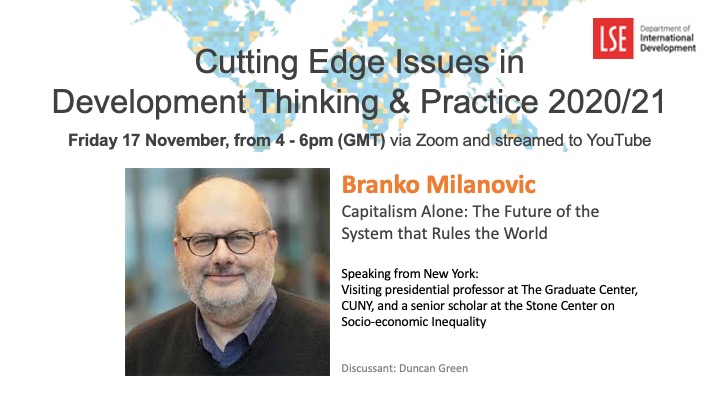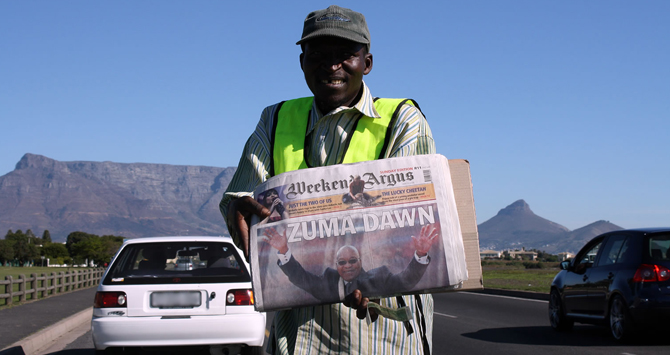Pritish Behuria writes a report on The Youth in Africa workshop hosted by the LSE Department of International Development on 15 May, 2017.
Africa’s population has increased dramatically in the past three decades. In 1980, the continent’s population was 477 million. By 2015, it had increased to over 1.2 billion. Some have also argued that Africa is the ‘youngest continent’ (although this claim is contested, as is the categorisation of who belongs in the category of ‘youth’). In the past few years, discussions of a ‘demographic dividend’ or a ‘youth bulge’ in Africa have become increasingly popular. International organisations like the United Nations, The African Development Bank and The World Bank and even multinational firms like Deloitte have argued that Africa is likely to experience the positive or negative consequences of demographic changes. However, it is worth clarifying the meanings of the terms – ‘demographic dividend’ and ‘youth bulge’ – and to emphasise that there is significant variation across the continent.
The Demographic transition refers to a shift from high birth and death rates (often common in poorer countries) to a situation where a country’s population enjoys lower birth and death rates (usually common in countries with higher levels of development). During the ‘demographic transition’, a youth bulge occurs when the majority of the population is concentrated within working-ages and the dependency ratio is low (when there are fewer young and elderly dependents). If the ‘youth bulge’ results in an increase in productivity and savings then this is argued to represent a demographic dividend because it contributes to productive development. However, the demographic transition is at various stages across Africa. It has not followed a linear path. Some researchers, including John Boongaarts and John Casterline have argued that fertility rates have not reduced as expected and that a ‘stalled demographic transition’ has been the result. Jean-Pierre Guengant and John May argue that there have been varied experiences across the continent. In some countries, fertility rates have been reduced and a youth bulge may be occurring. In others, the reduction in fertility rates has slowed down or even stalled. The result has been high dependency ratios across many African countries and a high concentration of young Africans within the population.
Laura Mann and I organised a conference – The Youth in Africa: Opportunities, Resistance and Transformation – on May 15, which sought to examine the varied challenges and opportunities associated with increasing youth populations in Africa. Over 70 academics, doctoral students and development practitioners attended the workshop. The conference began with an opening panel. Tim Dyson and Kate Meagher presented their thoughts on the consequences of the ‘stalled’ demographic transition in Africa. Dyson’s work on the demographic transition has been influential within international development. He reminded us that demographic dividends don’t occur without fertility declines. He underlined that the demographic transition is a period of destabilisation and African countries may be experiencing turbulence related to such effects. Meagher has previously demonstrated that many African countries are not experiencing a youth bulge (much less a demographic dividend). Instead, she argues that ‘socio-economic and health reversals during the 1980s and 1990s have… created a situation of rapid population growth, catastrophic unemployment and high dependency ratios despite a decade of vigorous economic growth.’
The next panel examined the different strategies through which African governments legitimise their development strategies in the context of heavy youth unemployment. Among other important insights, the panel analysed how governments create binary representations of youth as ‘good’ (those who fit development strategies) or ‘bad’ youth (those who contest the development strategy). Portia Roelofs presented her work on how the Oyo state government in Nigeria legitimised the state government’s development strategy and the marginalization that accompanies it. She also analysed how the youth population conceives of ideas like ‘development’ and ‘progress’. Eyob Gebremariam described how the Ethiopian government’s development strategies have evolved over time to tackle the challenge of youth unemployment. He also demonstrated how such strategies are used to manage political participation among the Ethiopian youth. Emma Murphy presented some of her findings from two research projects – CASAW-Arab Youth and The Power2Youth project. She discussed her work on the political economy of Tunisia’s youth policy, highlighting how the government incorporates and manages the youth as part of its development strategy. Claire Mercer chaired the panel while Will Rollason, who works on youth in Rwanda, acted as discussant.

There is now a popular narrative across mainstream development that entrepreneurship is a pathway through which young people can fulfil their aspirations, as well as create jobs to meet their country’s needs. Alice Amsden argues that such arguments characterise mainstream poverty alleviation strategies since the structural adjustment era and are based on a false ‘Say’s Law’ logic where it is assumed that individuals can create their own jobs rather than acknowledging the role that the government played in linking skills with jobs in past episodes of sustained development. Our third panel examined the different experiences of entrepreneurship for African youth, with Kate Meagher acting as discussant. Perez Ochieng, a Kenyan entrepreneur who owns Sacoma foods, struck a more hopeful note, arguing that entrepreneurship in the agriculture and agro-processing sector has often been associated with job creation in Africa. Catherine Dolan argued that entrepreneurship places undue responsibility for job creation on the poor themselves. In her work, she has argued that though entrepreneurship can result in gains for some, it “shifts attention from the failure of the economic structure in which their targets exercise limited economic agency.” Marco Di Nunzio presented his research on why hustlers don’t become businesspeople in relation to the informal sector in Ethiopia. Among other things, his work demonstrated how marginality and exclusion was produced and reproduced among Ethiopian youth. Moses Oketch presented cross-country data, which demonstrated that there has been a recent increase in the uptake of technical and vocational training (TVET) programmes across Africa. However, these programmes have not been able to address the mismatch between skills and the labour market.
The following panel examined the debate that a youth bulge could either lead to a demographic dividend or that it would be a time bomb, with jobless growth necessarily leading to revolt and violence. The argument that unemployed youth represent a danger to political stability or that they are easily mobilised to take up arms is often repeated within academic literature. However, this relies on assumptions of methodological individualism, which have been contested. It also relies on questionable data. Christopher Cramer argues that in truth, we know too little about the relationship between labour markets and violence. Adam Branch presented his work – based on a recent book – examining the increasing incidence of political protests in African countries. Luisa Enria examined the unemployment-violence nexus in Sierra Leone, analysing how the employment aspirations of marginalised youth impacted their decisions to take part in violence. Akin Iwilade analysed the nature of subversion and complicity among youth in the Niger Delta. He argued that access to clientelistic networks impacted whether youth could engage in violent action. Teddy Brett chaired the panel while James Putzel, whose work in the Crisis States Research Centre related to these themes, acted as a discussant.
The final panel dealt directly with the question of youth unemployment and interrogated to what extent particular sectors could contribute to creating employment opportunities. Leigh Gardner chaired the panel and Laura Mann acted as the discussant. Catherine Boone began with an important reminder that most of the African population lives in rural areas. She discussed the potential and challenges associated with creating employment in the agriculture sector despite recent investments in the sector. Her presentation was made with consideration of property institutions (and land tenure arrangements, in particular), which has been a focus of her prize-winning work. Roy Maconachie presented his work on the mining sector in Sierra Leone, examining whether it held the potential to create employment opportunities. Tom Goodfellow and I presented our work on services-led development in Rwanda, highlighting the limited redistributive effect it has had in terms of creating youth employment opportunities.
We had the pleasure of ending the conference with a keynote speech from Thandika Mkandawire. He argued that during the structural adjustment era, the position of African youth was challenged by deindustrialization and pressure from donors to invest more in children and less in youth (with less investment in secondary and tertiary education). He reminded us that ‘the youth’ is a highly differentiated group and argued that it may be important to analyse what the sons and daughters of rich Africans will choose to do. Whether they invest in productive activities or in other pursuits will impact the future of their countries. He also argued that it was important to understand how governments enact social policy and create employment opportunities as they pursue development strategies. Finally, he ended with a discussion of whether African developmental states can be democratic, arguing that some of the most widely African developmental states, which are more autocratic (Rwanda, Ethiopia), actually have low savings rate and that their economic progress may not be sustainable.

The workshop helped participants discuss the consequences of youth unemployment across African countries. The range of discussions reminded us that African governments are negotiating these challenges through very different strategies while also examining how African youth are dealing with the challenges of globalisation and jobless growth in the 21st century. Importantly, it demonstrated the importance of studying how such challenges are being dealt with in different ways rather than relying on uniform ways in which the African continent is often represented.
Dr. Pritish Behuria is an LSE Fellow in the Department of International Development at The London School of Economics and Political Science. Laura Mann and he would like to thank the Department of International Development for providing funding for the workshop.
The views expressed in this post are those of the author and in no way reflect those of the International Development LSE blog or the London School of Economics and Political Science.





